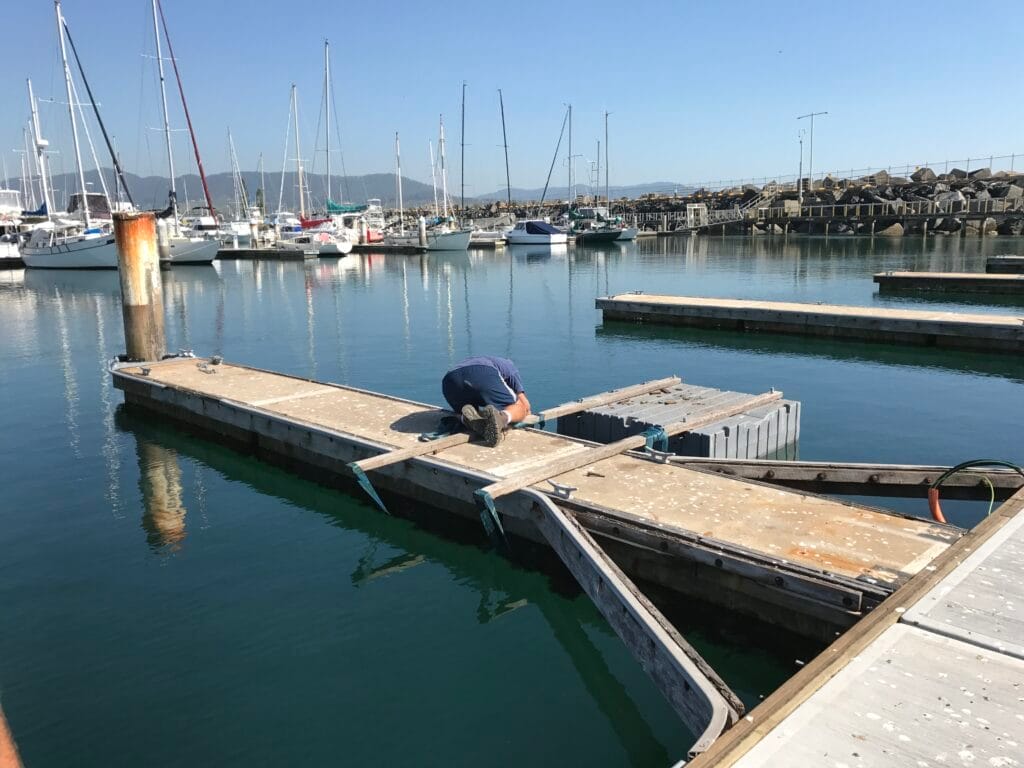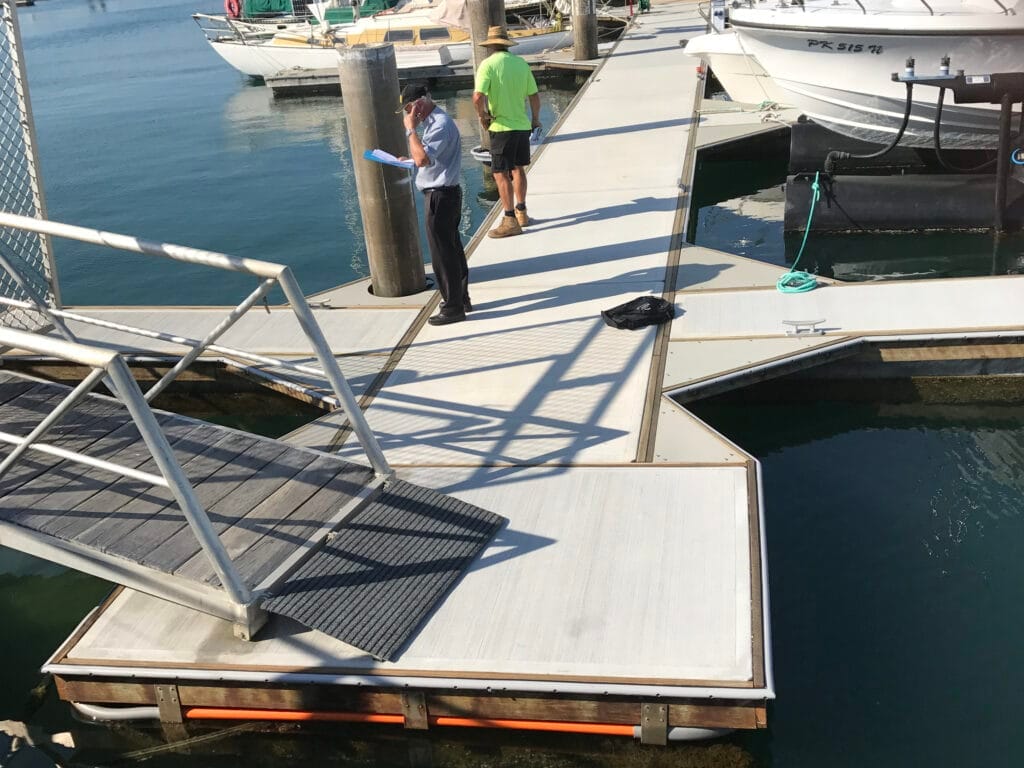Thanks to an amazing team effort, Coffs Harbour International Marina expects to be back to full operating capacity this month. The marina suffered substantial damage when an east coast low passed over the region in June. Wild surf conditions caused waves to crash over the marina’s northern breakwall. The force of the waves broke apart many of the marina’s docks.

If you have ever had the pleasure of working on a 100-year old house that has been through multiple renovations, you know the many challenges this type of work can bring. Uniformity is lacking and daily surprises are the norm.
It takes a special contractor to tackle these jobs with the skill, finesse and creativity required to execute them successfully.
Performing repair work on a large, older marina is not much different than doing repair work on a 100-year old house, especially if the marina has been built or repaired in a piece-meal fashion over time.
If you spend time walking the docks of marinas worldwide, you are bound to see those with a hodgepodge of docks – it is a reality of the industry. Many of the large, older marinas have been added to and renovated over time. As a result, it is common for these marinas to have a variety of dock types. You may see a mix of fixed and floating or of concrete and aluminum. The marina may have a single type of dock but because it was erected over an extended period, the design and construction of the marina’s docks varies from tree to tree.
One of the major challenges for marinas like these is repair work. Because their docks are a mishmash of systems, repair work is often complicated and requires a different solution for each type/generation of dock.
In June 2016, a strong storm system swept through Australia’s New South Wales territory. The storm caused considerable damage to infrastructure along the coastline. Coffs Harbour was particularly hard hit. The local marina, Coffs Harbour International Marina sustained significant damage and was forced to close until repair work could be completed.
In an effort to reopen the marina’s berths as quickly as possible, the marina limited repair work to storm damaged items only. The aim was to address and repair or replace the damaged dock sections.
Coffs Harbour is a 150-berth marina built over 10 years with parts of the marina 25 years old. The marina has four different dock types including two types built to metric measurements and two built with imperial dimensions. This made repair work particularly challenging. All four types were timber waler thru-rod construction, so there was some consistency. However, the docks were from multiple manufacturers and were built over an extended period, so there were a number of inconsistencies between them.
When Bellingham Marine’s crew surveyed the damaged docks to prepare a quote for repair work, they noted differences in the following:
- Module lengths
- Module widths
- Thru-rod diameters – some were 16mm and others were 20 ¾mm
- Thru-rod spacing (a mix of metric and imperial)
- Thru-rod placement from top of deck to rod hole
- Mixed-use of plastic inserts and full thru-rods
- Variations in knee-bracket and pile guide design
These differences significantly complicated repair work.
Each section marked for repair or replacement had a unique set of conditions and required custom tooling.
The fabrication process for walers and brackets was complex and time consuming. Unique hole patterns were required where one type of dock joined another. Differing walkway modules coupled with differing types of fingers required knee-brackets to have up three different drill patterns.
Bellingham Marine’s team attacked the work with skilled execution and an appreciation for the owner’s urgency to get the marina’s docks reopened as quickly as possible. “It was about getting the boaters back in their berths,” remarked Bellingham Marine Manager of Project Development Gary Charlwood.
“Our crews commenced on site early November 2016 and had completed all contracted work by February 2017,” said Charlwood. “We replaced 390 square meters of pontoons, 3 km of timber walers and 5 km of thru-rods.”
Bellingham’s scope of work also included replacement of service units, plumbing and electrical services, knee-brackets, pile guides and fendering.

“Communication, early involvement from key team members and an attitude of flexibility were some of the attributes that led to the success of the Coffs Harbour repair project,” shared Charlwood.
“We pulled staff from metal fabrication, float fabrication and our sub-contractors together early in the planning phase. We asked them to tell us how quickly they could help us. We worked the program around what they could deliver and when. This allowed us to identify fabrication and casting challenges early and identify timing solutions more readily.”
“We also utilized a local crane operator, plumber and electrician who were all familiar with the marina, its staff and the site. Their knowledge and experience was instrumental. They knew exactly what was there before the storm; they knew about any skeletons in the closet, and they knew how to ‘open doors.’”
“Throughout the entire process we were upfront, honest and realistic about how soon works could be carried out. Although there was pressure on all parties to get the repair work completed quickly, it was critical that expectations remained realistic and that allowances in material and time were built into the program.”

“This was a challenging but extremely rewarding project. We had a great team; those relationships are even stronger now. Everyone put forth a tremendous effort that was appreciated by all.”

